In 2010, Oren Eckhaus, a photographer based in New York City, visited our facility to photograph several of the molecular models that remain extant in the Ava Helen and Linus Pauling Papers. He did so in support of Jane Nisselson’s documentary-in-progress, “Unseen Beauty: The Molecule Imagined,” which she was researching with support from the OSU Libraries Resident Scholar Program.
Now Eckhaus is preparing several of his photographs for display in an upcoming art exhibition, and he was kind enough to share a handful of the images with us. He also provided a short artist’s statement:
The idea of photographing the molecular models came as an add-on visual assistant to a movie (that is still in the making) who’s main subject is to show the representation of pure scientific ideas as real tangible forms.
In my profession, along with being a fine art photographer, I also document objects of art for museums and art collectors. Upon seeing the models, I was struck by their beauty. They are important both as art pieces and early science tools.
Therefore, the approach of photographing the pieces was a mix of an artistic and documentary point of view, showing the original scientific intent, along with their artistic beauty.
A book of 32 molecule images is in the making.
Click on any image to open the gallery and to learn more about the molecular models highlighted within.
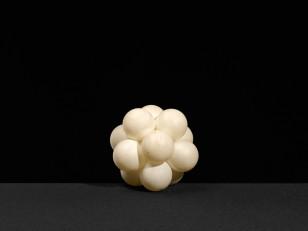 A molecular structure created out of plastic balls akin to ping pong balls. Ca. 1950s?
A molecular structure created out of plastic balls akin to ping pong balls. Ca. 1950s? 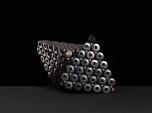 Plastic pyramidal structures created from a kit, ca. 1960s?
Plastic pyramidal structures created from a kit, ca. 1960s? 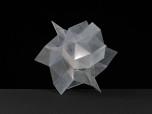 Unidentified crystal structure, likely not created by Pauling and perhaps used as a teaching aid. Ca. 1950s?
Unidentified crystal structure, likely not created by Pauling and perhaps used as a teaching aid. Ca. 1950s? 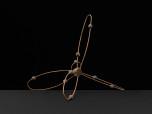 A demonstration of electrons in orbit around a nucleus. This model was likely machined at Caltech and presumably dates to the 1930s or 1940s.
A demonstration of electrons in orbit around a nucleus. This model was likely machined at Caltech and presumably dates to the 1930s or 1940s. 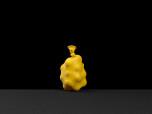 Marbles encapsulated in a balloon. Pauling created several of these “quick models” in 1967-68, to support work that he was doing on the structure of atomic nuclei
Marbles encapsulated in a balloon. Pauling created several of these “quick models” in 1967-68, to support work that he was doing on the structure of atomic nuclei  Bond angles drawn on a keepsake that highlights tourist destinations in South Dakota. Pauling’s only documented trip to the Dakotas came in 1974, when he delivered two lectures at the University of North Dakota.
Bond angles drawn on a keepsake that highlights tourist destinations in South Dakota. Pauling’s only documented trip to the Dakotas came in 1974, when he delivered two lectures at the University of North Dakota. 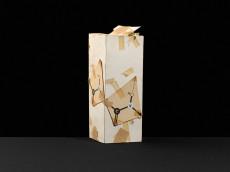 Paper model likely created as an intermediate during the process of developing a crystal structure. Ca. 1940s?
Paper model likely created as an intermediate during the process of developing a crystal structure. Ca. 1940s? 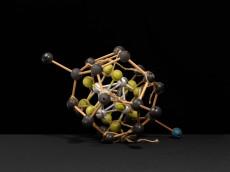 A “tinker toy” molecular structure with rope. The rope was, perhaps, used to hang the model for display. Alternatively, it may have been used to demonstrate properties of bond valence. Ca. 1950s.
A “tinker toy” molecular structure with rope. The rope was, perhaps, used to hang the model for display. Alternatively, it may have been used to demonstrate properties of bond valence. Ca. 1950s.
